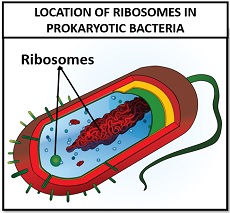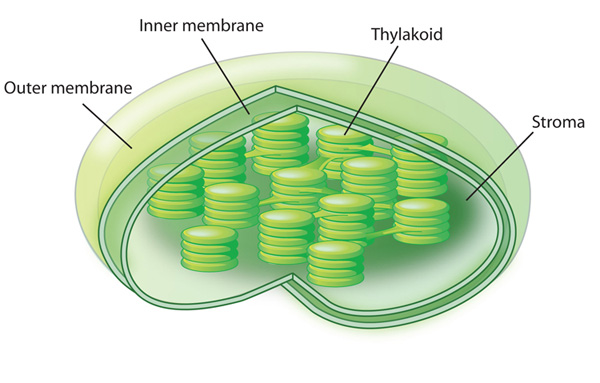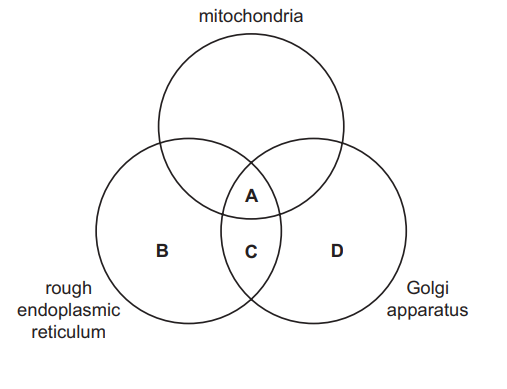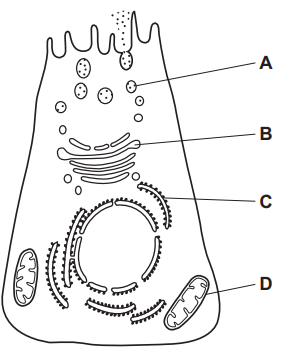Question
What are always present in prokaryote cells?
A capsules
B flagella
C pili
D ribosomes
Answer/Explanation
Answer D

Ribosomes are responsible for protein synthesis and are present in all living cells. They are the site of translation, where the genetic information encoded in messenger RNA is used to synthesize proteins. In prokaryotic cells, ribosomes are smaller than those found in eukaryotic cells but they are still present in all prokaryotic cells.
Question
The following are all features of eukaryotic cells.
1 chloroplast
2 endoplasmic reticulum
3 lysosome
4 mitochondrion
5 nucleus
Which of these have a double membrane?
A 1, 2 and 4
B 1, 3 and 5
C 1, 4 and 5
D 2, 3 and 5
Answer/Explanation
Answer C



Chloroplasts and mitochondria are organelles that are thought to have originated from free-living prokaryotes that were engulfed by ancestral eukaryotic cells. As a result, they have a double membrane, with the outer membrane being derived from the host cell’s plasma membrane and the inner membrane being derived from the prokaryotic cell’s plasma membrane. The nucleus also has a double membrane, with the outer membrane being continuous with the endoplasmic reticulum and the inner membrane surrounding the nucleoplasm.
Question
What is the function of nucleoli?
- formation and breakdown of the nuclear envelope
- formation of centromeres
- formation of ribosomes
- formation of the spindle during nuclear division
Answer/Explanation
Ans:
C
Yes, that’s correct! The nucleolus is a substructure within the nucleus of eukaryotic cells that is responsible for the production of ribosomal RNA (rRNA) and the assembly of ribosomes, which are the cellular structures that carry out protein synthesis.
Question
Which organelles are required for the formation of the hydrolytic enzymes found in lysosomes?

Answer/Explanation
Ans: A
Mitochondria and lysosomes are critical to every cell in the body, where they play distinct roles: mitochondria produce energy for the cell, while lysosomes recycle waste material.
Enzymes of the lysosomes are synthesized from the proteins of the rough endoplasmic reticulum. The enzymes are released from the Golgi apparatus in small vesicles that fuse with the acidic vesicles of the Golgi apparatus. These acidic vesicles are termed as endosomes. This fusion forms a lysosome.
Thus, the correct option is A.
Question
The diagram is taken from an electronmicrograph of a cell which secretes enzymes.
Where are these enzymes made?

Answer/Explanation
Ans:
C
